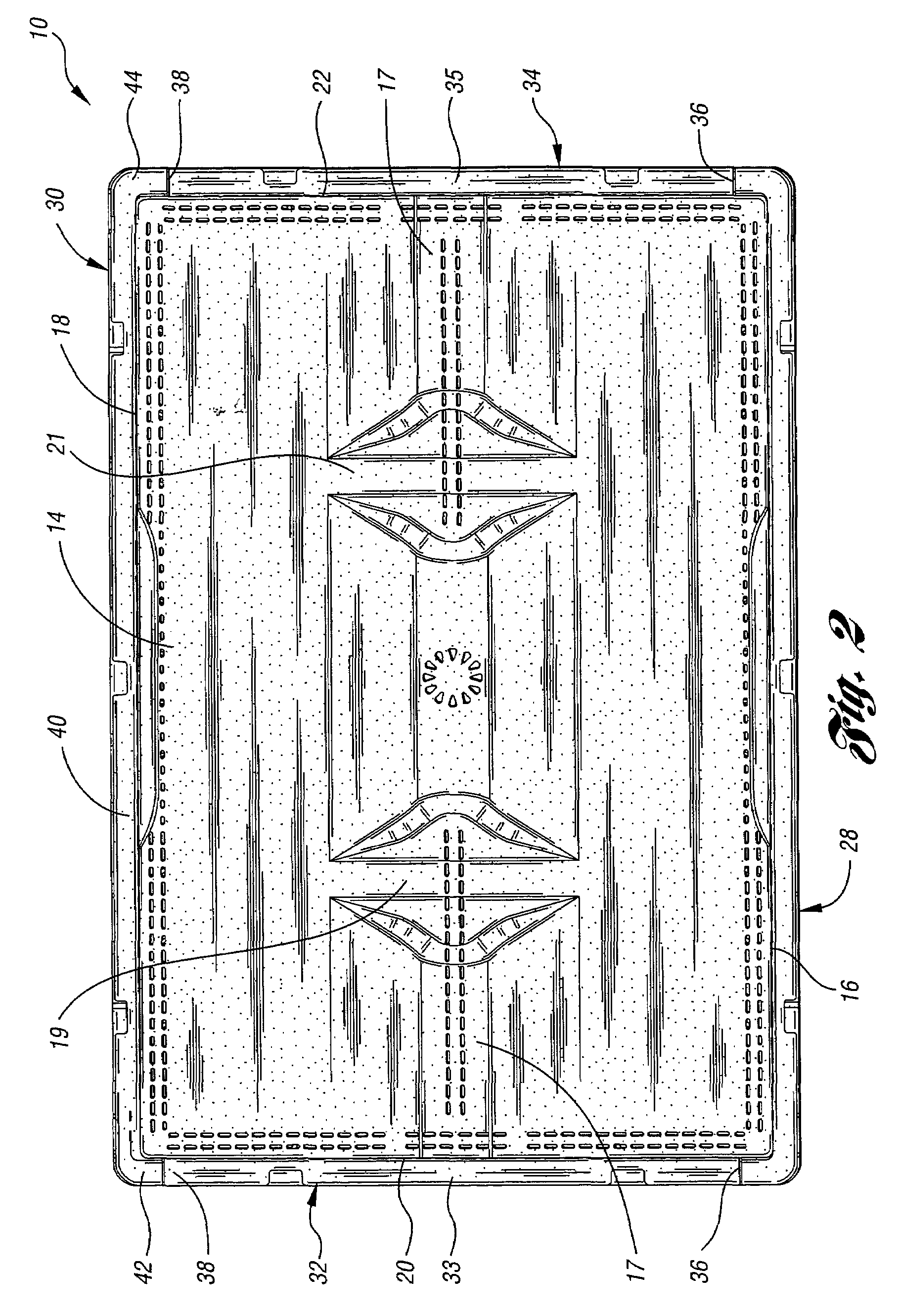Collapsible container
a container and lid technology, applied in the field of collapsible containers, can solve the problems of easy warpage and deformation of components, difficult to carry, and large volume of containers with outwardly folded panels, and achieve the effect of easy unloading and unloading without excessive user handling of the latch mechanism
- Summary
- Abstract
- Description
- Claims
- Application Information
AI Technical Summary
Benefits of technology
Problems solved by technology
Method used
Image
Examples
Embodiment Construction
[0052]With reference to FIGS. 1 and 23 of the drawings, illustrated therein is a collapsible container 10 according to the present invention. Container 10 is also appropriately referred to as a collapsible crate or box. Container 10 is formed of a thermoplastic resin, such as polypropylene, via an injection molding process or other plastic molding process suitable to this application. While container 10 is suitable for many uses, it is particularly well-suited for the storage and transport of perishable goods and produce such as fruits and vegetables, and more particularly bananas, where the circulation of air and other gases within container 10 assists in developing and maintaining the produce freshness and ripening during shipment to the market. This circulation is fostered through venting apertures 11 provided throughout container 10.
[0053]As shown in FIGS. 1–5, container 10 includes a base member 12 having a bottom wall 14 which serves as the lower support for container 10. As b...
PUM
 Login to View More
Login to View More Abstract
Description
Claims
Application Information
 Login to View More
Login to View More - R&D
- Intellectual Property
- Life Sciences
- Materials
- Tech Scout
- Unparalleled Data Quality
- Higher Quality Content
- 60% Fewer Hallucinations
Browse by: Latest US Patents, China's latest patents, Technical Efficacy Thesaurus, Application Domain, Technology Topic, Popular Technical Reports.
© 2025 PatSnap. All rights reserved.Legal|Privacy policy|Modern Slavery Act Transparency Statement|Sitemap|About US| Contact US: help@patsnap.com



